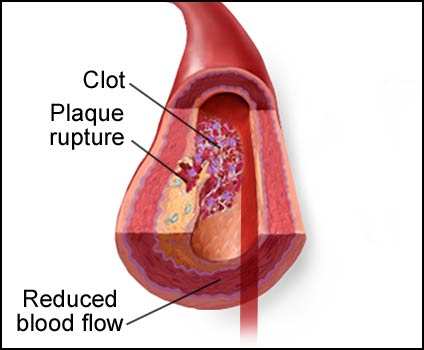
Angina
Angina is a discomfort in the chest, arms, neck or jaw caused by narrowing of the coronary arteries by cholesterol containing fatty deposits called plaque that reduce the amount of oxygen-rich blood that reaches the heart muscle. Stable (reversible) angina usually occurs when the heart works harder than usual and needs more oxygen (see fig. 1 and 2). Progressive (unstable) angina usually occurs when a plaque in one or more of your coronary arteries ruptures (bursts). Blood clots often form around the area and may cause severe or complete blockage of the artery (see fig. 3 and 4). If a complete blockage is not relieved quickly, damage to the heart muscle occurs. This is called a heart attack.
Figure 1: Reversible angina from increased heart demand (exercise).
Figure 2: Reduced blood flow caused by plaque.
Figure 3: Progressive angina associated with heart attack.
Figure 4: Reduced blood flow caused by plaque rupture and a blood clot.
Visit Medmovie.com Website for more information.



